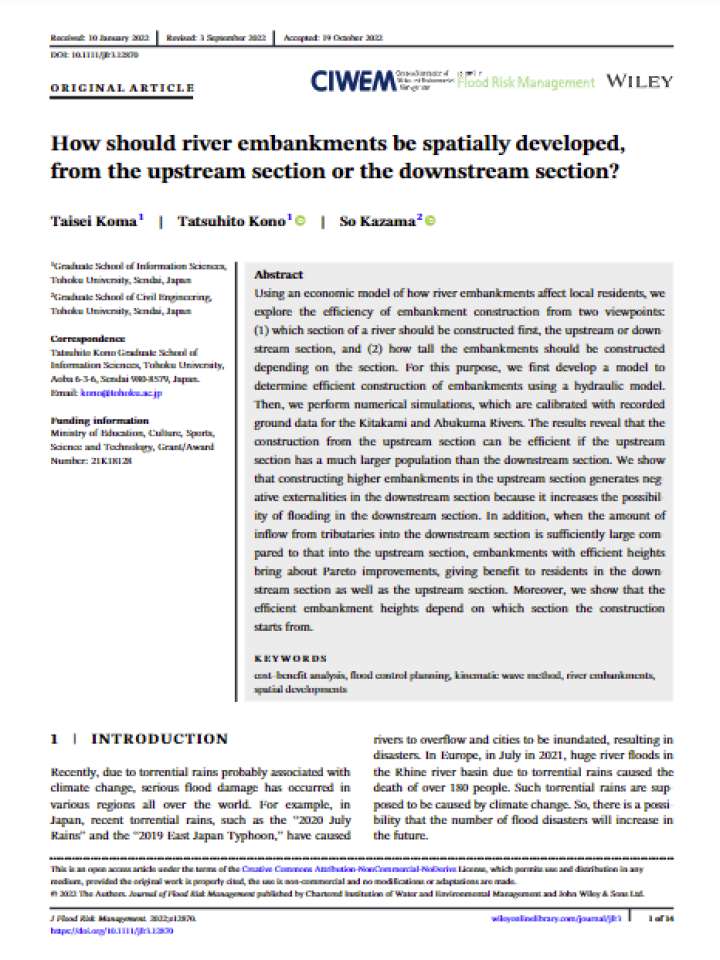How should river embankments be spatially developed, from the upstream section or the downstream section?
This paper explores the efficiency of embankment construction from two viewpoints, using an economic model of how river embankments affect local residents: (1) which section of a river should be constructed first, the upstream or downstream section, and (2) how tall the embankments should be constructed depending on the section. For this purpose, the researchers first develop a model to determine efficient construction of embankments using a hydraulic model. Then, they perform numerical simulations, which are calibrated with recorded ground data for the Kitakami and Abukuma Rivers.
The results reveal that the construction from the upstream section can be efficient if the upstream section has a much larger population than the downstream section. The paper shows that constructing higher embankments in the upstream section generates negative externalities in the downstream section because it increases the possibility of flooding in the downstream section. In addition, when the amount of inflow from tributaries into the downstream section is sufficiently large compared to that into the upstream section, embankments with efficient heights bring about Pareto improvements, giving benefit to residents in the downstream section as well as the upstream section. Moreover, the study shows that the efficient embankment heights depend on which section the construction starts from.
Explore further
